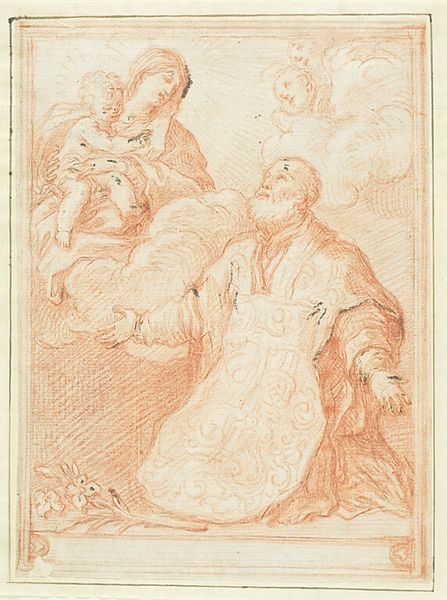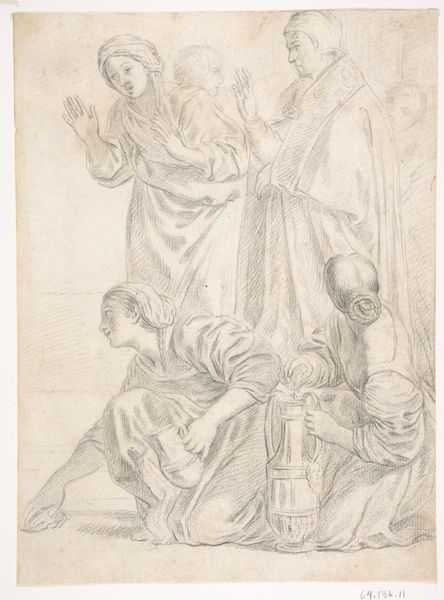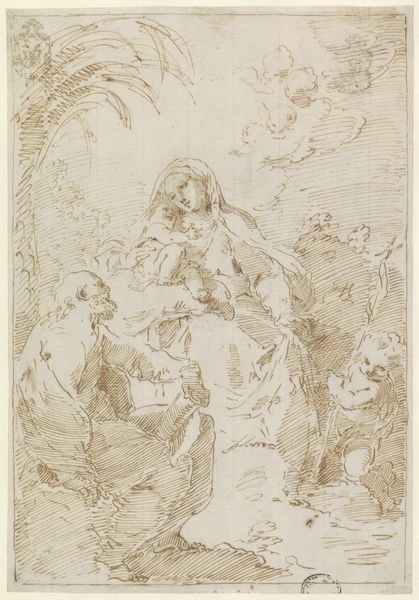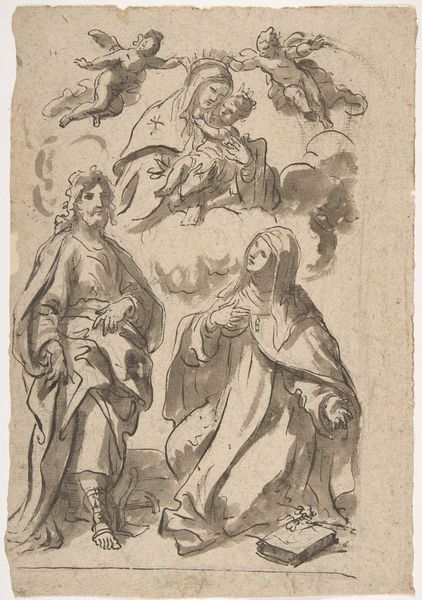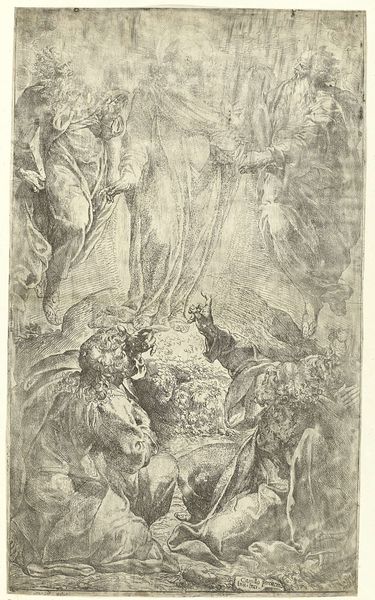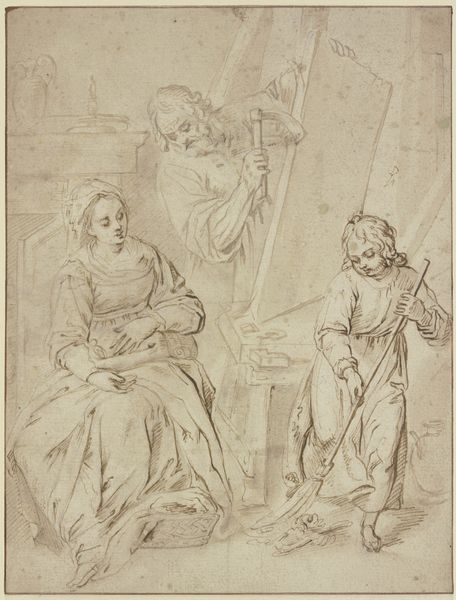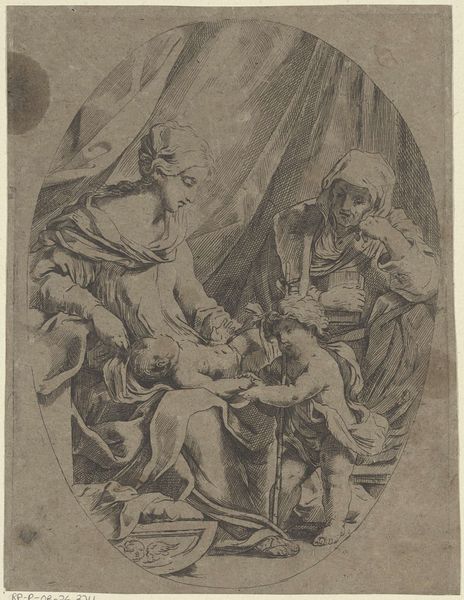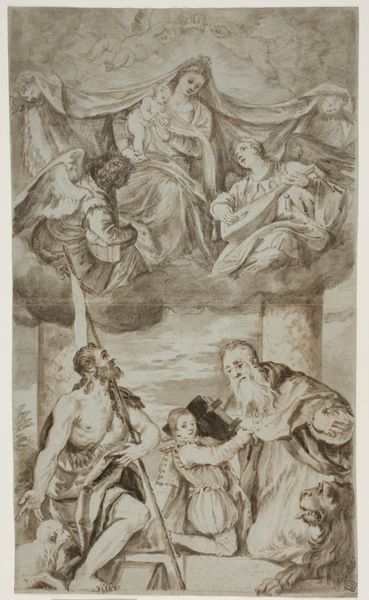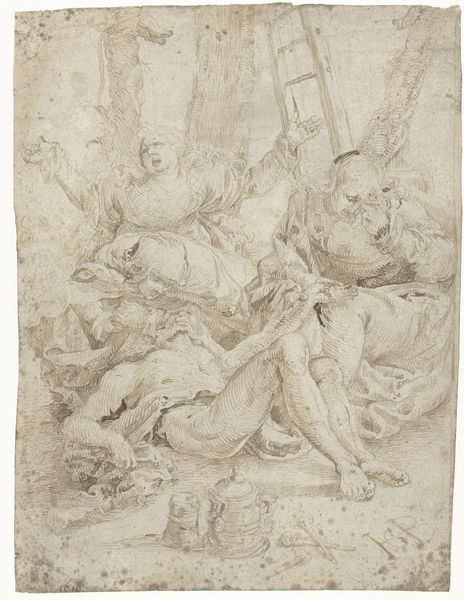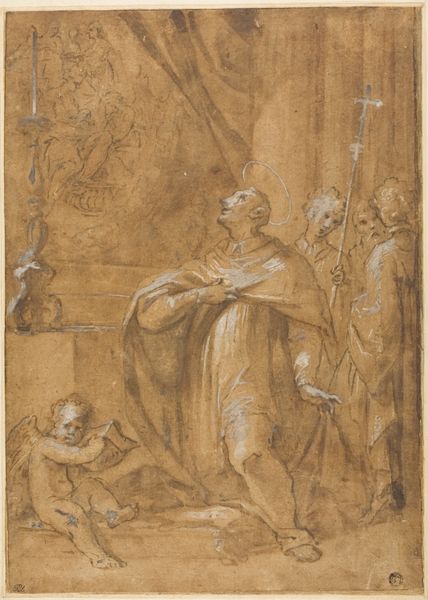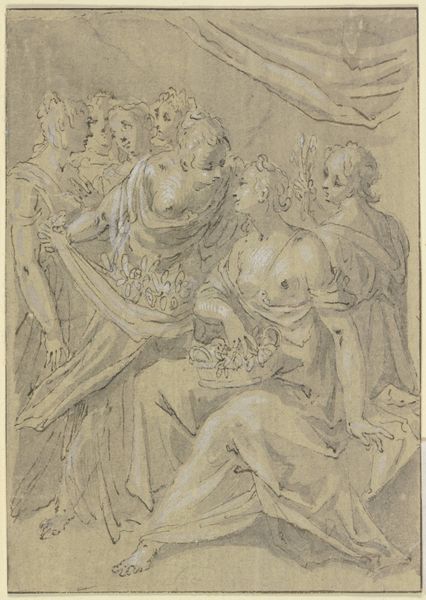
drawing, paper, pencil
#
drawing
#
pencil sketch
#
figuration
#
paper
#
11_renaissance
#
personal sketchbook
#
pencil
#
sketchbook drawing
#
pencil work
#
history-painting
#
italian-renaissance
Dimensions: height 299 mm, width 196 mm
Copyright: Rijks Museum: Open Domain
Curator: Looking at this pencil drawing, I am immediately struck by its ethereal quality, its figures rendered in soft, almost dreamlike lines against a light brown paper. Editor: This sketch captures a poignant scene from the New Testament, “Rest on the Flight into Egypt,” attributed to Ludovico Carracci and thought to be created sometime between 1565 and 1619. It now resides at the Rijksmuseum. Curator: Yes, that specific moment is fraught with cultural weight. Carracci beautifully captures the holy family’s vulnerability and reliance on divine intervention. I'm drawn to how the angels seem to be unfurling a protective drape over them. It feels symbolic of both shelter and a grander destiny being revealed. Editor: The history surrounding depictions of the Holy Family’s flight is rich. It became a popular subject during the Renaissance, as European powers expanded, leading to anxieties around displacement, refuge, and how we depict vulnerable populations. Curator: Absolutely, the specific composition – the gentle curve of Mary's gaze, Joseph holding the infant Jesus – invites contemplation. One cannot separate that visual harmony from its function as a comfort during uncertain times. There is a continuity in how the icon acts as a psychological tool to process contemporary anxieties through these visual representations across generations. Editor: It is interesting to consider Carracci’s role within the cultural moment of Reformation and Counter-Reformation tensions. Images became tools to reaffirm core religious values for a society shaken by reformist ideology. What are your thoughts on this artwork being just a simple preparatory sketch versus it potentially embodying its own cultural presence within this context? Curator: Ah, that's what makes the preliminary work so revealing sometimes, isn't it? Without the full weight of commission and public presentation, we glimpse Carracci's initial response, his own meditation on the scene, making this "Rest" very personal. I sense a very clear representation of empathy, regardless of it being considered an art piece for exhibition at the time. Editor: Indeed, and understanding the art market's developing role back then illuminates how artists balanced religious obligations with creative innovation and personal sentiment. Studying its function in 16th- and 17th-century socio-political debates enables us to consider how artwork played a role in solidifying doctrine, reflecting shifting social consciousness. Curator: Beautifully said. This encounter certainly helps emphasize how deeply symbolic art can resonate, spanning historical periods.
Comments
No comments
Be the first to comment and join the conversation on the ultimate creative platform.
